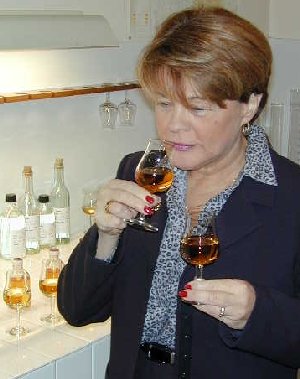Guest column continued from page 1 But if I ever had a chance to be born again, I would be only happy if it could happen in Charente region in the Southwest France. The picturesque, somehow sleepy countryside along the banks of Charente river that is snaking through the vineyards and idyllic ancient towns towards the Atlantic, this is what I consider my second, spiritual home. From the very first time I visited it, I simply fell in love with that part of France! It is not very frequented by the mass tourists and backpackers, so it still looks like on the paintings by Monet, Sisley or Pissarro. Peace and silence, good air to breathe, good meals to eat, good vins de pays to drink and, most of all, beautiful people to meet, talk, listen to and to make friends. What more needs a person who likes to enjoy the life? The region has a wonderful combination of an agriculture (developed by centuries until it became an art) and the traditional distilling craft. But, oh God, what a breathtaking craft! What a breathtaking spirit! Just say the word "cognac" and your mouth will fill with saliva, while your nostrils will broaden in anticipation of the mellow tones of rancio Charentais. continues Guest column page 4
|
|
ORECO 1.0continued from page 1 Founded by producers and negociants (traders) its role was conceived as one of market regulation with an accent on quality via maturation. Recognized by the French state as a "magasin général" the warrants delivered against Cognac stocks were accepted as guarantees by banks and were a major instrument in financing stock. Current difficulties and the spot market have drastically reduced this practice. Today ORECO’S principal mission is seen as a supplier of stocking facilities with the aim of encouraging maturation. Associated services are a tasting course (our Editor's experience is noted on page 3) and quality supervision by recognized brokers. Important efforts have been made over the past decade to improve the quality of maturation |
| by
upgrading barrels and vats, stock in the former now outweighs the latter 2 to 1 with a
healthy percentage of new barrels for those who choose to use them. Fees are naturally variable depending on the type of wood chosen and charges are based on volume, for a standard 2 year aging schema including some new wood this works out at 130FF per 100 liters per year. Frequently accused of high evaporation rates (over 3%), Daniel de Saint Ours, technical director, insists that this is a fallacy and would be counter-productive in view of their invoicing by volume. When tackled on the cost he defends the quality of ORECO service and the additional guarantees provided such as insurance. Stocks now benefit from totally individualized tracking, barrel by barrel, as are the barrels themselves. Six cooperages are employed by ORECO. Stocks are split between “crus” and “comptes d’age” in a representative manner, 80% of the total is either directly held or destined to negociants via contracts, the bulk of deliveries in the past financial year were in “comptes” 4 & 5. Cognac is distilled between November and March 31st following harvest. During this period it is placed in a "compte" or "account" baptized 00. On April 1st the administration moves stock forward a year to 0 and so on. Cognac can be bottled from "compte" 2 on and the various commercial designations used are all linked to a minimum age or "compte". In 1995 the Armagnac industry set up their own "magasin général" O.R.E.A. under the technical supervision of the Bureau National Interprofessionnel de l’Armagnac (B.N.I.A). O.R.E.A. stocks now total around 1,700,000 liters pure alcohol which represents just under 9% of total stock. continues ORECO page 3 |
||
 Photo courtesy ORECO D. Saint Ours
Photo courtesy ORECO D. Saint Ours